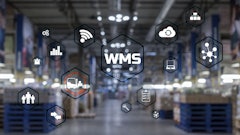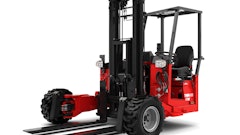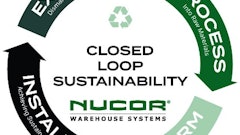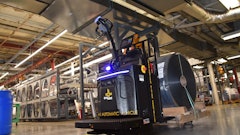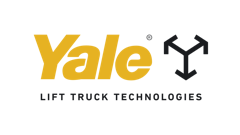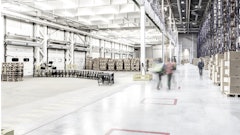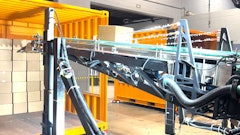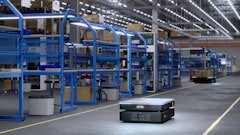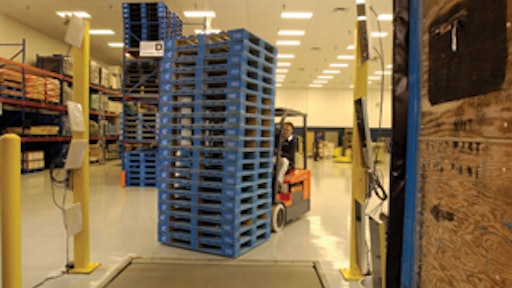
A number of companies are conducting pilot programs utilizing Radio Frequency Identification (RFID) to track the movement of their pallets and reusable containers through the supply chain. As a result, they are improving visibility and inventory maintenance.
There are a lot of pallets out there––estimates of the number of wooden pallets in the worldwide supply chain start at 200 million and go up from there. High-end wooden pallets are estimated to cost $25 each and with lumber costs rising, this makes pallets, which are subject to damage and costly repairs, an incredible expense.
Enter plastic pallets. These are more durable than wooden pallets and prevent product damage. However, they cost $50 apiece. Multiply that several thousand times and it's easy to see how plastic pallets and other reusable containers are a costly investment, one well-worth keeping track of. But what is the best way to do it?
Intermec, a Baltimore, MD company that develops technologies that track supply chain assets, recently participated in a program with its customer Nancy's Specialty Foods, of Menlo Park, CA. Workers using the bar code system sometimes had trouble finding inventory. The company had been experiencing worker downtime as a result.
In addition: "they saw themselves headed down a compliance path with Wal-Mart at some point in the future," notes Chris Kelley, director of RFID for Intermec.
"But," he continues, "rather than do what the industry calls ‘slap and ship' they said: ‘let's see what we can do to take advantage of this technology.'" The company focused on attaching durable RFID tags to the reusable containers that it used to move raw materials around in its warehouse and then used the technology to keep track of its assets—the results have been positive.
"They were seeing substantial benefits in reduction of out of stock raw materials," Kelley says. "They knew better what containers were sitting inside the freezer and they weren't losing orders or pallets because they knew where they put them."
"The main benefit of RFID is in the knowledge you gain from better understanding how your pallets move," agrees Per Ohstrom, director of marketing for CHEP USA, a U.S. pallet supplier.
CHEP has been equipping its wooden pallets with RFID tags for some time. "We laminate it inside plastic, which works as a carrier or receiver for the fasteners. So we can attach it to the pallet without having to damage the chip or antenna."
"If you are able to integrate data you capture using RFID into your enterprise resource planning system, there are opportunities to use that knowledge to run a slimmer supply chain. You can reduce stock outs if you know sooner what the consumption is down the supply chain."
Orbis Corp., a reusable plastic container company located in Oconomowoc, WI has been running an RFID visibility and compliance test program with customer Tanimura & Antle, a produce supplier to Wal-Mart.
With Orbis' help, Tanimura & Antle began shipping RPCs with RFID labels affixed to them in order to meet Wal-Mart's RFID compliance measures. Orbis, for its part, was interested in learning how to best leverage its asset tracking abilities. The company believed T&A would represent an excellent pilot test because it represented a managed pool of assets with retail implications.
"The pilot program began with 6,600 containers that would be shuttled between the Orbis wash site in Garland, TX, to Tanimura & Antle's Salinas, TX plant," notes Brad Bella, director of information technology for Orbis. The containers would then be packed with cauliflower and sent to the Wal-Mart DC in Cleburne, TX. From there, the RPCs went to the retail store, were emptied and sent to the Orbis wash center. The tags were read at every step along the way.
The study has yielded amazing results in terms of visibility. "In the initial stages," notes Bella, "our visibility increased in the double digit percentages." This included a 96 percent visibility of RPCs at the starting point and a 94 percent visibility of RPCs at any place in the supply chain. "Prior to this, as soon as they left our doc door it was really by word of mouth. We had no visibility."
These case studies point out several compelling best-use strategies for the employment of RFID in tracking containers and pallets. The companies that are having the greatest success, according to experts like Kelley, are the ones making the effort to design new processes around the movement of assets, as is the case with companies like Nancy's Foods, "rather than simply automating the processes they currently use."
"The best use, where the core economics make a great deal of sense, are where reusable tags are being used with reusable containers, in a relatively closed loop application and where they're controlling their own processes internally," says Kelley.










